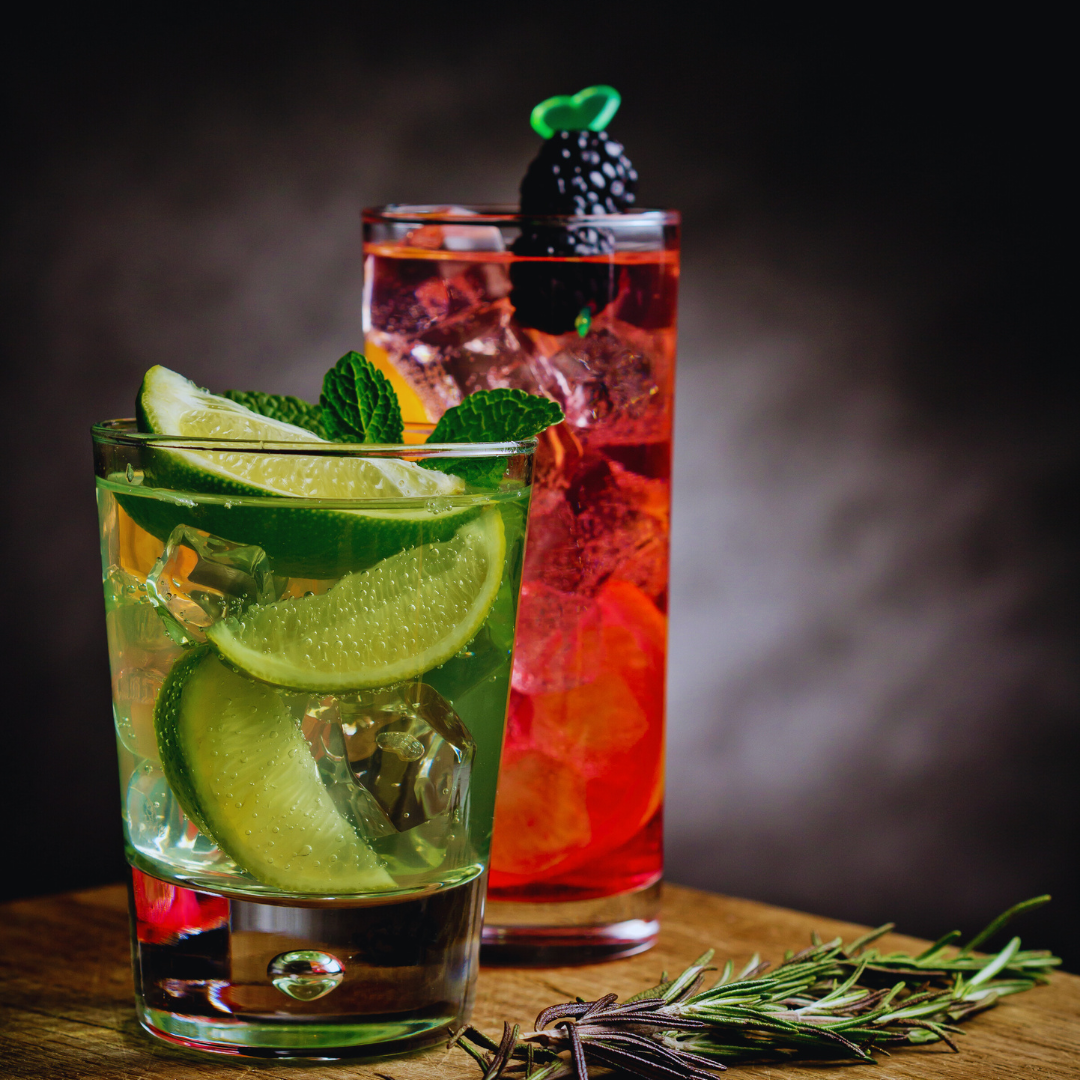How to Make Alcohol-Free Cocktails: A Guide to Refreshing and Delicious Mixes
Crafting alcohol-free cocktails can elevate any gathering while catering to those who prefer not to consume alcohol. Creating these vibrant and flavourful beverages often involves a blend of fresh fruits, herbs, and creative mixers that tantalise the taste buds without the effects of alcohol. This trend is gaining popularity as more people seek enjoyable, sophisticated alternatives.
Learning how to make alcohol-free cocktails opens up new avenues for creativity in mixology. With the right ingredients and techniques, anyone can impress guests, whether it’s for a casual get-together or a formal event. The versatility of these drinks means they can be tailored to suit any occasion, making them an essential addition to a well-rounded menu.
Exploring various recipes provides an opportunity to discover unique combinations that refresh and satisfy. From fruity spritzers to herbal infusions, the options are endless. Engaging with this craft not only enhances social experiences but also promotes a healthier lifestyle choice.
Essential Ingredients for Alcohol-Free Cocktails
Creating alcohol-free cocktails requires a thoughtful selection of ingredients that replicate the complexity of traditional drinks. The right components can elevate the experience and provide a satisfying taste without alcohol. Below are the essential ingredients to consider.
Fresh Juices and Mixers
Fresh juices serve as the backbone of alcohol-free cocktails. Lime juice is particularly popular, offering a zesty kick that enhances other flavours. Grapefruit juice adds a slightly bitter yet refreshing profile that works well in various mixtures.
Mixers like soda water, tonic water, and ginger beer can add both fizz and depth. For a light, effervescent option, soda water is ideal, while tonic water can provide an intriguing bitterness. Ginger beer adds spice and warmth, making it a versatile choice for a variety of cocktails.
Non-Alcoholic Spirits and Alternatives
Non-alcoholic spirits are crafted to mimic the taste of their alcoholic counterparts. Non-alcoholic gin is an excellent option, often infused with botanicals for a fragrant experience. Many brands now offer alternatives to whiskey and rum, allowing for diverse cocktail options.
These non-alcoholic alternatives can create complex drinks without the effects of alcohol. Mixing them with fresh juices and tonics can result in a sophisticated beverage that satisfies the palate without compromising on flavour.
Sweeteners and Flavour Enhancers
Sweeteners are crucial for balancing the acidity of fresh juices. Honey can add a rich, floral note, while brown sugar brings a hint of caramel. Sugar syrup is a versatile sweetener, easily mixed into cocktails for instant sweetness.
Flavour enhancers such as bitters (non-alcoholic versions) and herbs can also elevate the cocktail experience. Mint, basil, or even a dash of vanilla can heighten aromas and create a more layered flavour profile.
Garnishes and Ice Variations
Garnishes add visual appeal and can enhance flavour. Fresh herbs, citrus slices, and berries can transform the simplest drink into an attractive cocktail. They also introduce additional aromas, enhancing the overall experience.
The choice of ice is equally important. Ice cubes can provide a slow dilution, while crushed ice cools drinks quickly and adds texture. Experimenting with different ice types can affect the drink’s presentation and taste, making the cocktail even more enjoyable.
How to Make Alcohol-Free Cocktails Step By Step
Creating alcohol-free cocktails can be a delightful experience. By focusing on building a solid base, balancing flavours, and mastering serving techniques, anyone can craft delicious mocktails with appealing taste and mouthfeel.
Building the Base of Your Drink
The foundation of any cocktail is crucial for achieving depth of flavour. For non-alcoholic drinks, this often includes juices, syrups, and sodas.
- Juices such as orange, cranberry, or pomegranate add sweetness and acidity. Freshly squeezed juices enhance taste.
- Syrups like simple syrup, honey, or flavoured varieties introduce additional layers. For instance, rosemary or mint syrup can elevate a mocktail.
- Sodas and tonic water create effervescence, providing a refreshing quality that mimics traditional cocktails. Combining these elements can generate a well-rounded base that satisfies the palate, ensuring the mocktails taste robust and enjoyable.
Balancing Flavours and Mouthfeel
To mimic the complexity of a traditional cocktail, balancing flavours is essential. This involves incorporating sweet, sour, bitter, and savoury elements.
Sweetness can come from natural fruit or syrups. Sour elements, such as lemon or lime juice, add brightness, while bitterness can be introduced using non-alcoholic bitters or herbal infusions.
Mouthfeel is equally important. Ingredients like egg whites or aquafaba (chickpea water) can add a frothy texture.
Adding spices such as cinnamon or fresh herbs enhances the drink’s complexity. Experimenting with different combinations allows for personalisation, catering to different flavour preferences while ensuring a satisfying drinking experience.
Shaking, Stirring, and Serving Techniques
The method of preparation significantly affects the final product.
Shaking is ideal for drinks with juices or syrups. It integrates ingredients effectively while chilling the mixture. A cocktail shaker or jar with a tight lid suffices for this process.
Stirring is suitable for recipes that require gentler mixing, ensuring the resulting drink remains clear and beautifully presented.
When it comes to serving, choose appropriate glassware to enhance the aesthetic. Garnishes, such as citrus slices, herbs, or edible flowers, not only elevate the drink visually but also add extra layers of flavour.
The combination of these techniques helps produce mocktails that are not only pleasing to the eye but also enjoyable to taste.
Must-Try Alcohol-Free Cocktail Recipes
Creating non-alcoholic cocktails offers a world of flavour without the intoxicating effects. The following recipes highlight classic favourites, unique signatures, and refreshing seasonal choices perfect for any occasion.
Classic Favourites with a Twist
A Margarita Mocktail stands out as a popular choice. To prepare it, combine 120ml of fresh lime juice, 60ml of agave syrup, and a splash of soda water in a shaker with ice. Shake well and strain into a glass with salt on the rim.
The Virgin Mojito is another timeless option. Mix 10 fresh mint leaves with 30ml of lime juice in a glass. Muddle gently and add ice, then top with soda water for a refreshing finish.
Adding fresh fruits enhances these recipes. A few slices of jalapeño can add a spicy kick to the margarita, while berries can complement the mojito’s minty flavour.
Signature Mocktail Creations
Diverse flavours define signature mocktails. The Cucumber Cooler features 100ml of cucumber juice, 20ml of lime juice, and 50ml of elderflower cordial. Shake with ice and strain into a glass over ice, garnishing with cucumber slices.
The Tropical Fizz combines 80ml of pineapple juice, 50ml of coconut water, and fizzy water. Serve over ice with a lime wedge for an exotic refreshment. These drinks are visually appealing and tasty, appealing to various palates without the alcohol content.
Refreshing Seasonal Variations
Seasonal ingredients enhance the enjoyment of alcohol-free cocktails. Summer Berry Spritzer mixes equal parts of seasonal berries and sparkling water, creating a light, fruity drink perfect for hot days.
For autumn, the Spiced Apple Mocktail can be a hit. Combine 100ml of apple juice, and a dash of cinnamon, and top with ginger ale. Serve with a cinnamon stick for added aroma and taste.
Using fresh, local produce can elevate the overall experience, bringing out the best in non-alcoholic mixes throughout the year.



